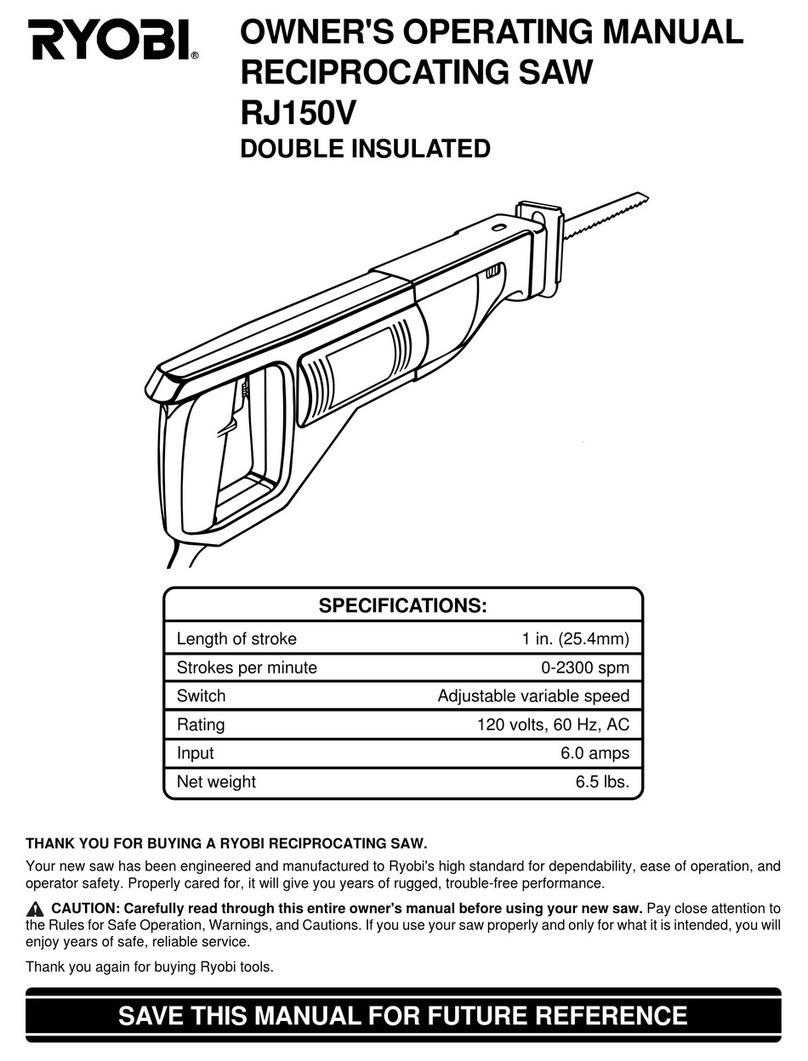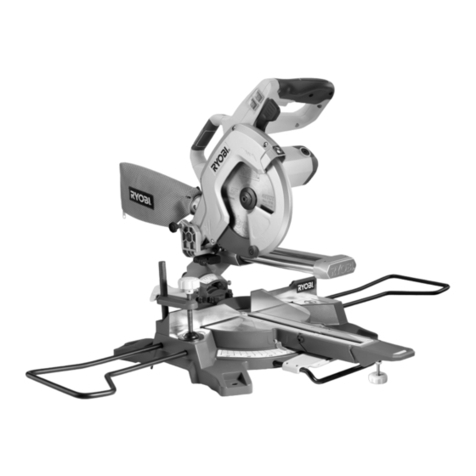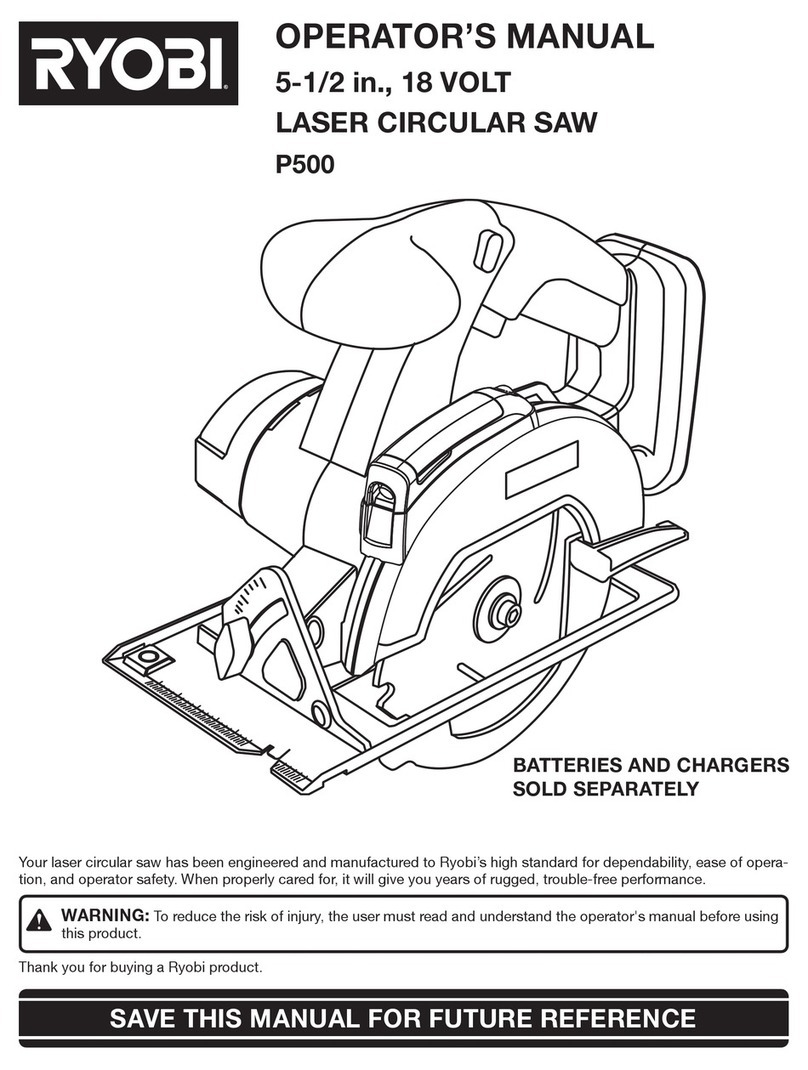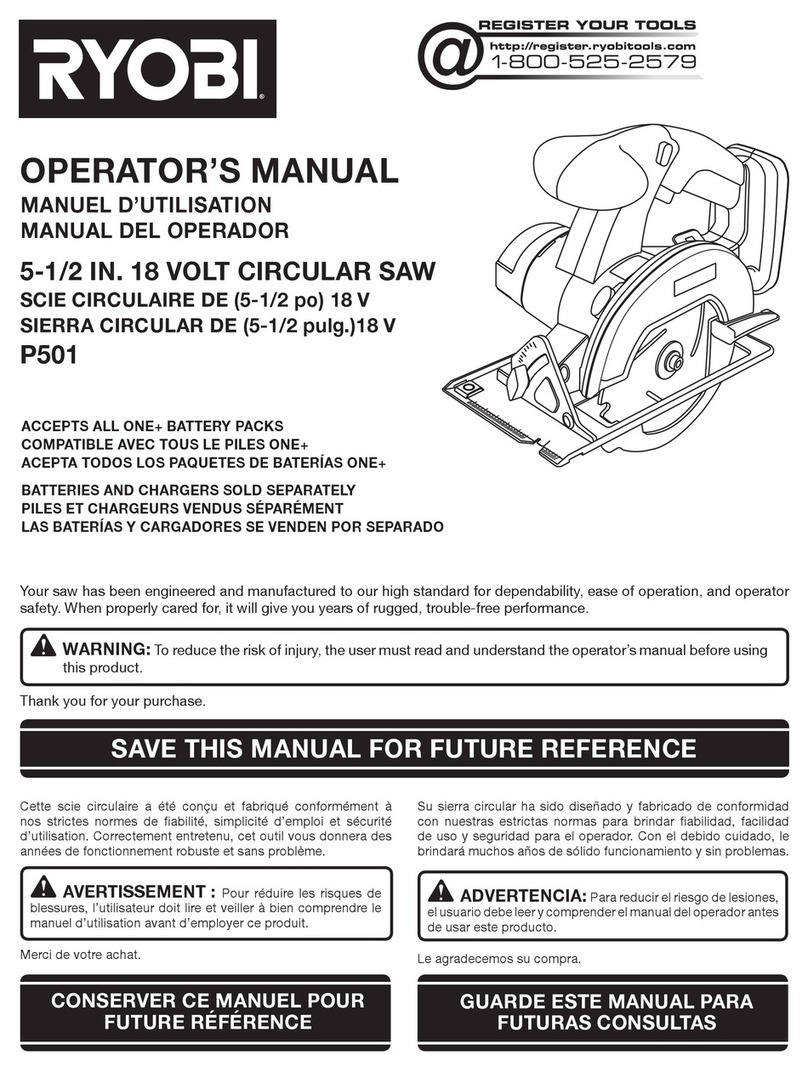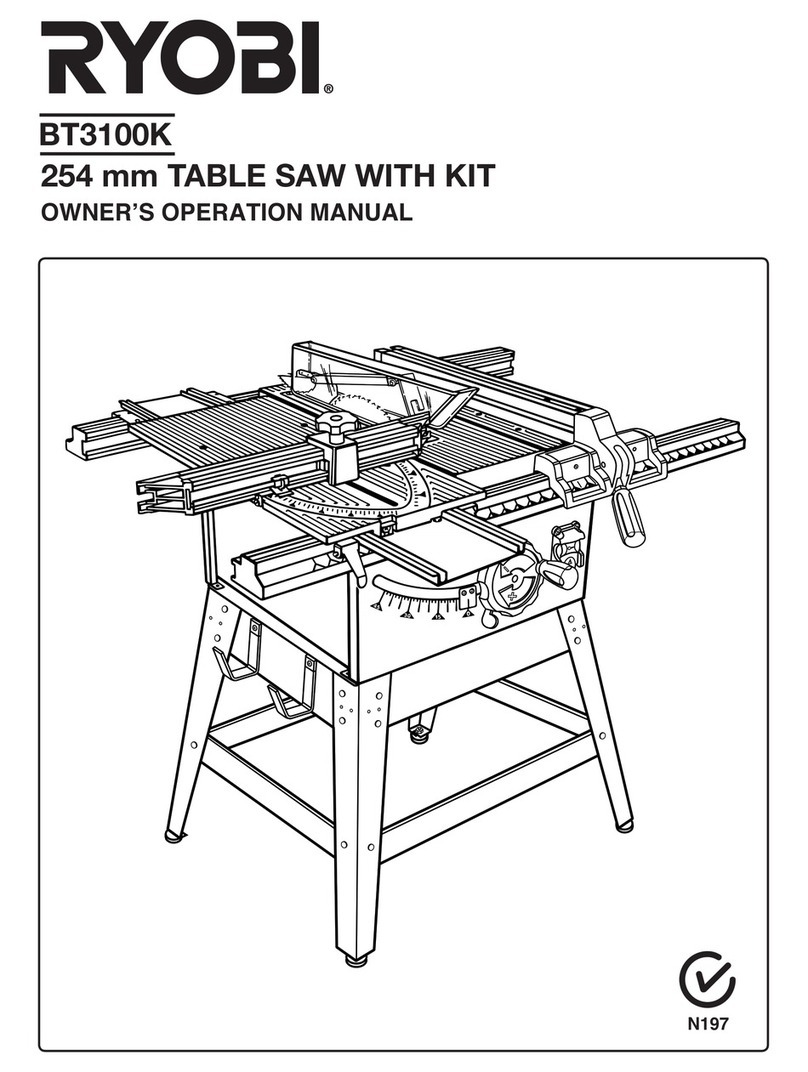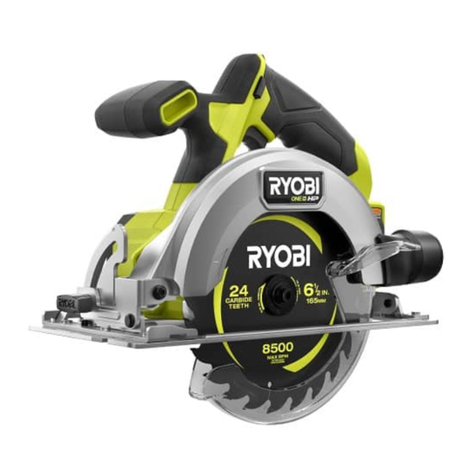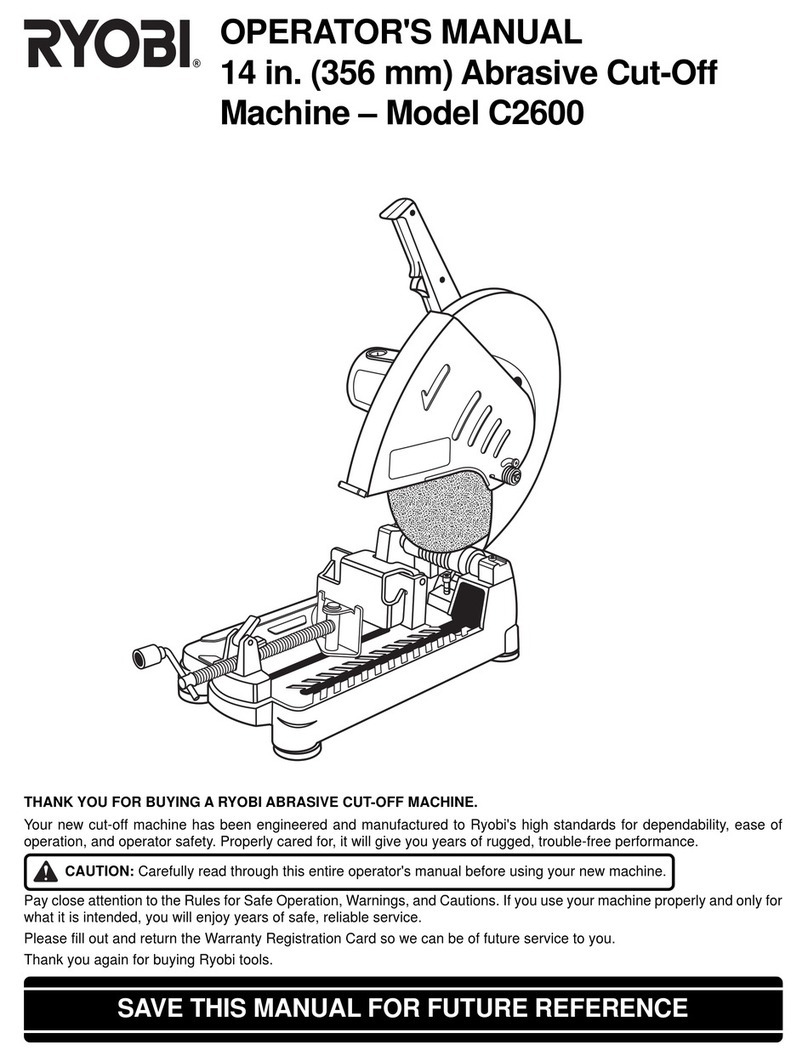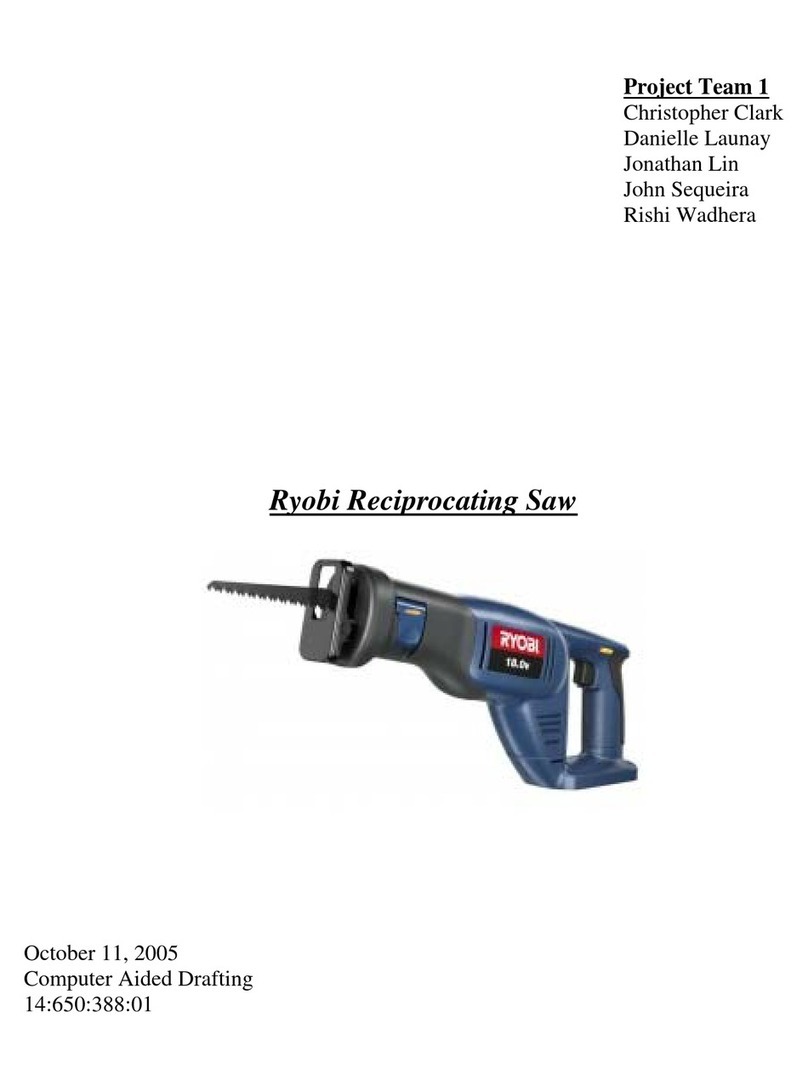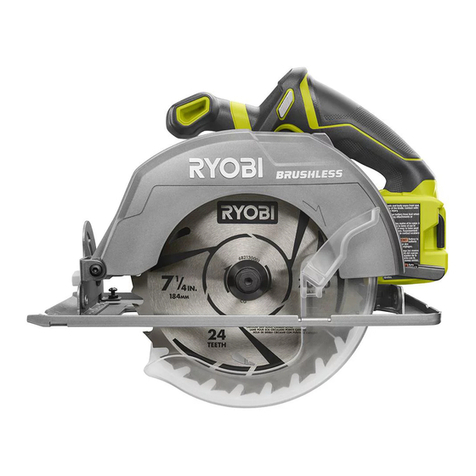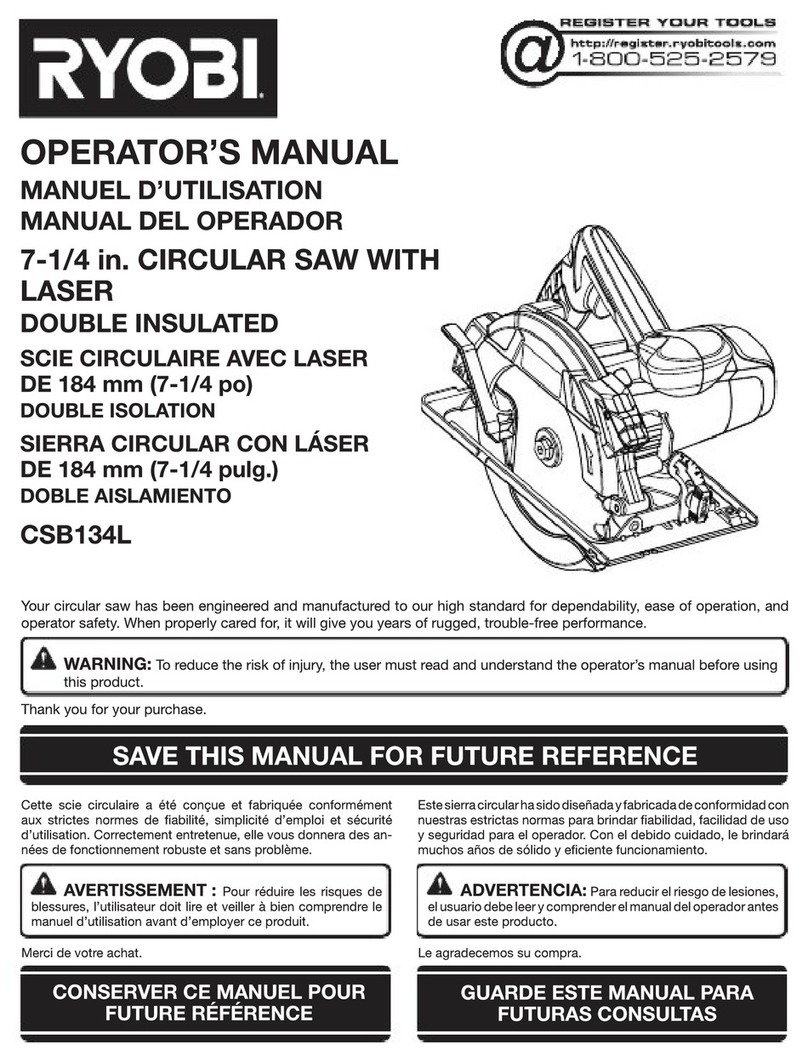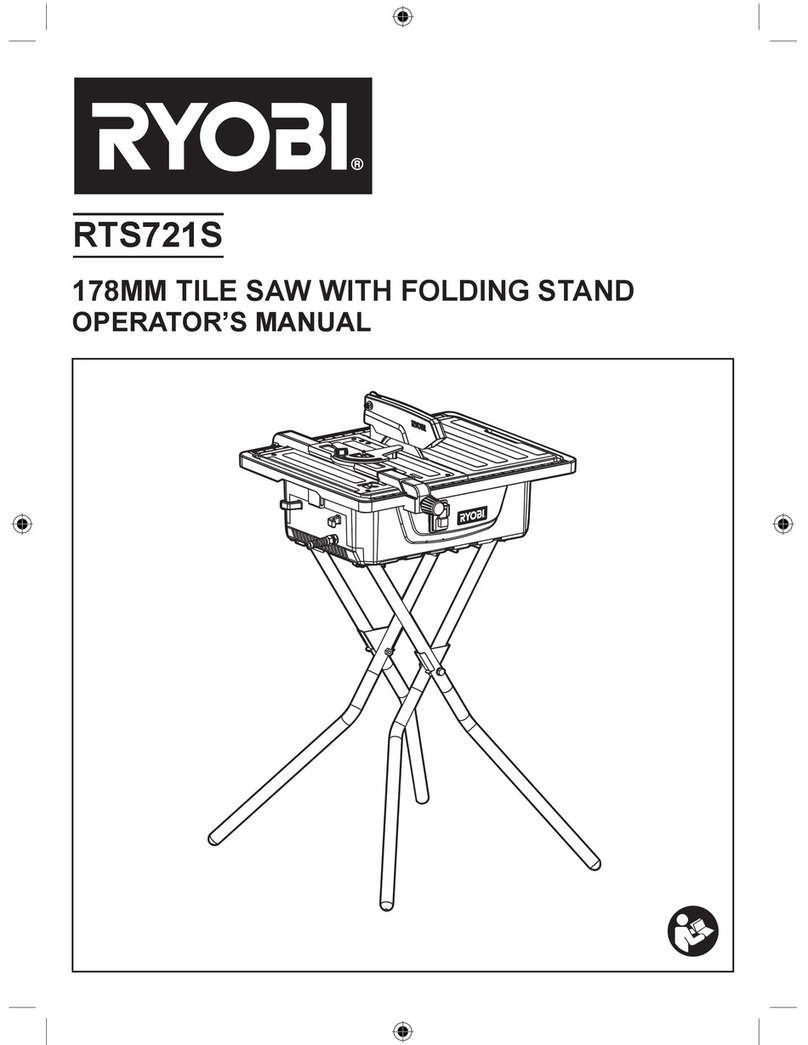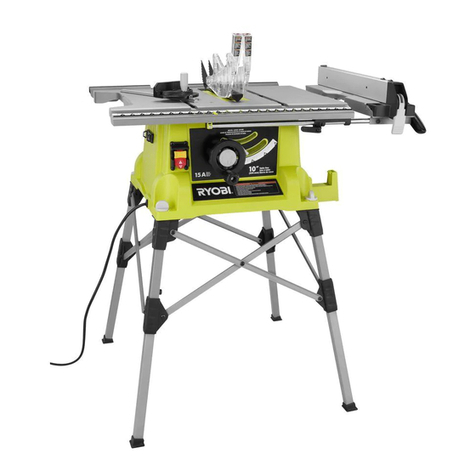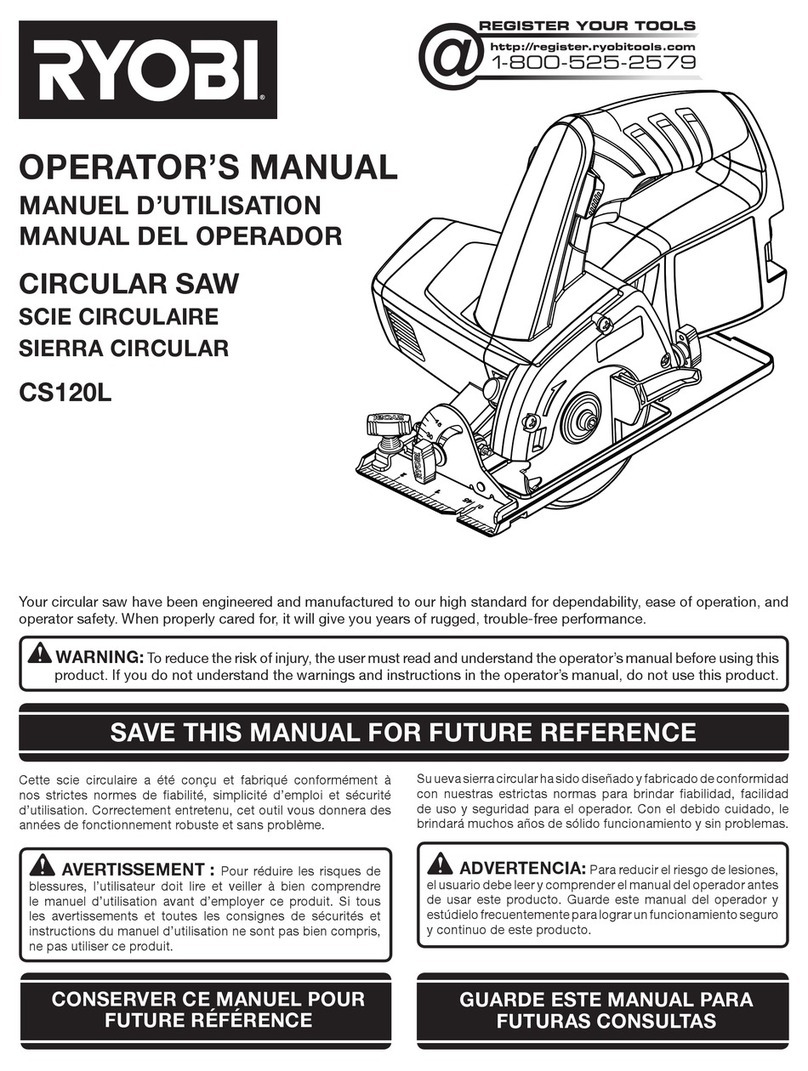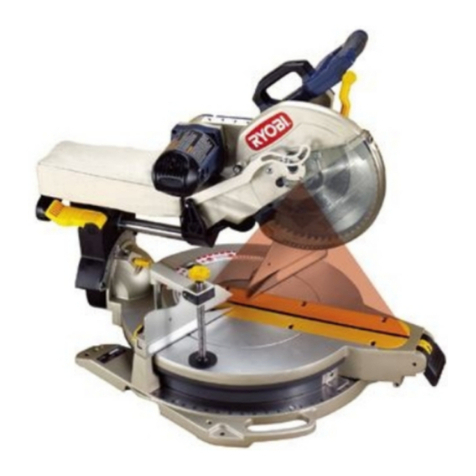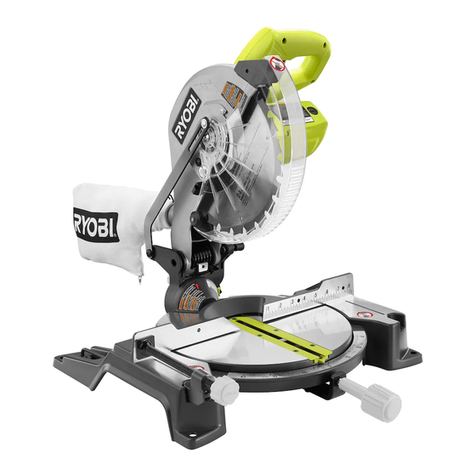
SUPPORT LARGE PANELS.
Large panels must be
supported as shown in Fig. 12 to minimise the risk of
blade pinching and kickback. When the saw has to be
rested on the workpiece, make sure that it rests on
the larger portion, with the smaller portion being cut
off.
USE A RIP FENCE.
Always use a rip fence when ripping.
GUARD AGAINST KICKBACK.
Kickback occurs when
the saw jams suddenly and is driven back towards the
operator. Release the switch immediately if the blade
binds or the saw jams. Keep blades sharp. Do not
force the tool. Stay alert and remain in control of the
tool. Do not pull out the saw out of the workpiece
while the blade is spinning.
Make sure that all blade guards operate correctly.
LOWER GUARD.
Raise the lower guard with the lower
guard lever. Ensure that the lower guard operates
freely without jamming. Do not lock the lower guard in
the open position.
ADJUSTMENTS.
Before cutting, make sure that the
depth and bevel adjustment knobs are tight.
ONLY USE CORRECT BLADES.
Do not use blades with incorrect size holes. Never
use defective or incorrect blade washers or bolts.
Do not use blades which are deformed or damaged.
Do not use high speed steel blades.
Do not use blades which do not comply with specifications
given in this manual.
Do not use saw blades, the blade of which is thicker
or the set of which is smaller, than the thickness of the
riving knife.
Ensure that the riving knife is adjusted so that:
A. The distance between the riving knife and the toothed
rim of the saw blade is not more than 5mm.
B. The toothed rim does not extend more than 5mm
beyond the lower edge of the riving knife.
The riving knife should always be used except when
making a plunging cut in the middle of a workpiece.
AVOID CUTTING WORKPIECES WITH NAILS.
Inspect
for and remove any nails from the lumber before cutting.
ACCESSORIES:
The use of accessories or attachments
other than those recommended in this manual might
present a hazard.
REPLACEMENT PARTS:
When servicing, use only
identical replacement parts.
Do not stop the blade by lateral pressure.
Ensure that the saw blade is suitable for the spindle
speed.
RULES FOR SAFE OPERATION
INSTRUCTIONS FOR SAFE HANDLING
Make sure that the voltage used corresponds to the
voltage marked on the tool's identification plate.
The maximum permissible system impedance: Zmax for
ESC1400K is 0.303. If in doubt, please verify with your
local energy-utility that the AC-outlets in your area do
not exceed the above values.
Never use the tool if its cover or any bolts are missing.
If the cover or bolts have been removed, replace them
prior to use. Maintain all parts in good working order.
Always secure tools when working in elevated positions.
Never touch the blade, grinding wheel or other moving
parts during use.
Never start a tool when its rotating component is in
contact with the workpiece.
Never lay a tool down before its moving parts have
come to a complete stop.
ACCESSORIES: The use of equipment or accessories
other than those recommended in this manual might
present a hazard.
REPLACEMENT PARTS: When servicing, use only
identical replacement parts.
SPECIFIC SAFETY INSTRUCTIONS FOR CIRCULAR
SAWS
This saw is designed for working with wood only. Never
use it to cut materials other than wood.
Make sure that the saw blade is properly attached as
described in the Operating Instructions before
connecting the tool to the power source.
Never point the blade towards any person as this is
extremely dangerous.
Make sure the power cord is well away from the material
to be cut to prevent the risk of electrical shocks.
Hold the saw firmly before switching it on, as inertial
force could cause the saw to break free from your grasp.
Always hold the saw fimly with both hands while cutting.
Single-handed operation is extremely dangerous.
Do not start cutting until the blade has reached full
speed.
It is extremely dangerous to use a circular saw upside
down, i.e. with its blade pointing upwards while the
motor housing is secured by a vice or other jig.
KEEP GUARDS IN PLACE AND IN GOOD WORKING
ORDER.
Never wedge or tie the lower guard open. Check
the operation of the lower guard before each use. Do
not use your saw if the lower guard does not close
properly over the saw blade.
KEEP THE BLADE CLEAN AND SHARP AT ALL TIMES.
A
sharp blade minimises jamming and kickback.
DANGER! KEEP HANDS AWAY FROM THE CUTTING AREA.
Keep hands away from the blade. Do not reach
underneath the workpiece while the blade is rotating.
Do not attempt to remove any offcuts while the blade is
CAUTION
If the saw is dropped, the lower guard may be bent,
restricting full return.
Page 2
CAUTION
The blade coasts a little while after the trigger is released.
WARNING
Always disconnect the power cord from the socket
before changing the blade or performing other
maintenance work.
